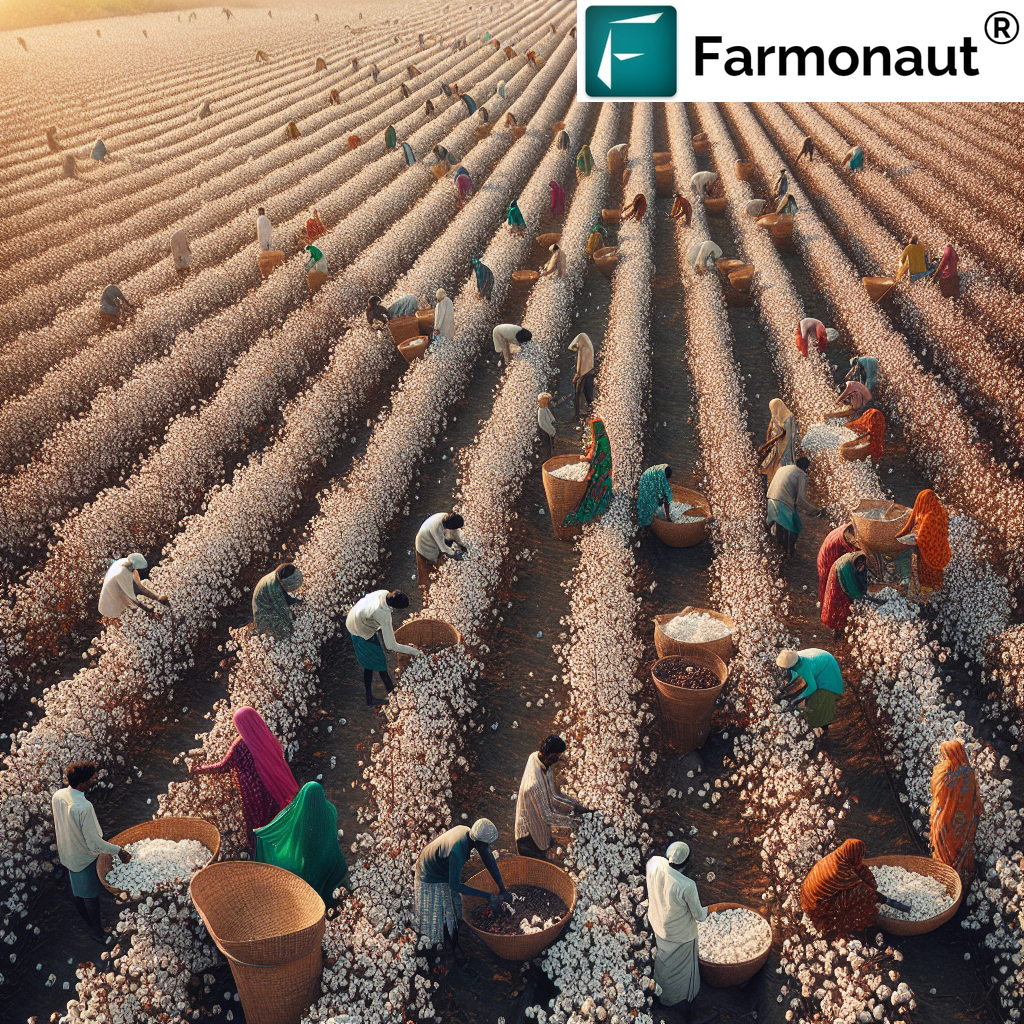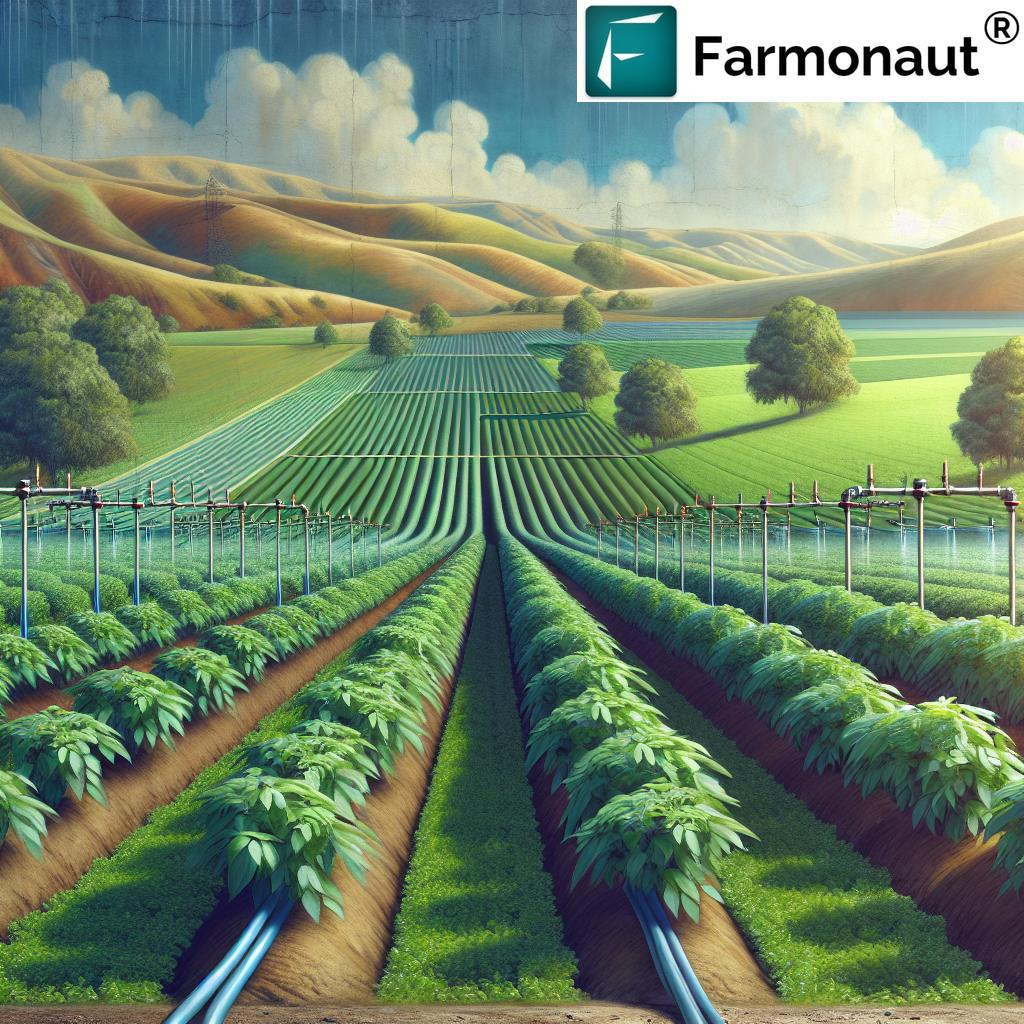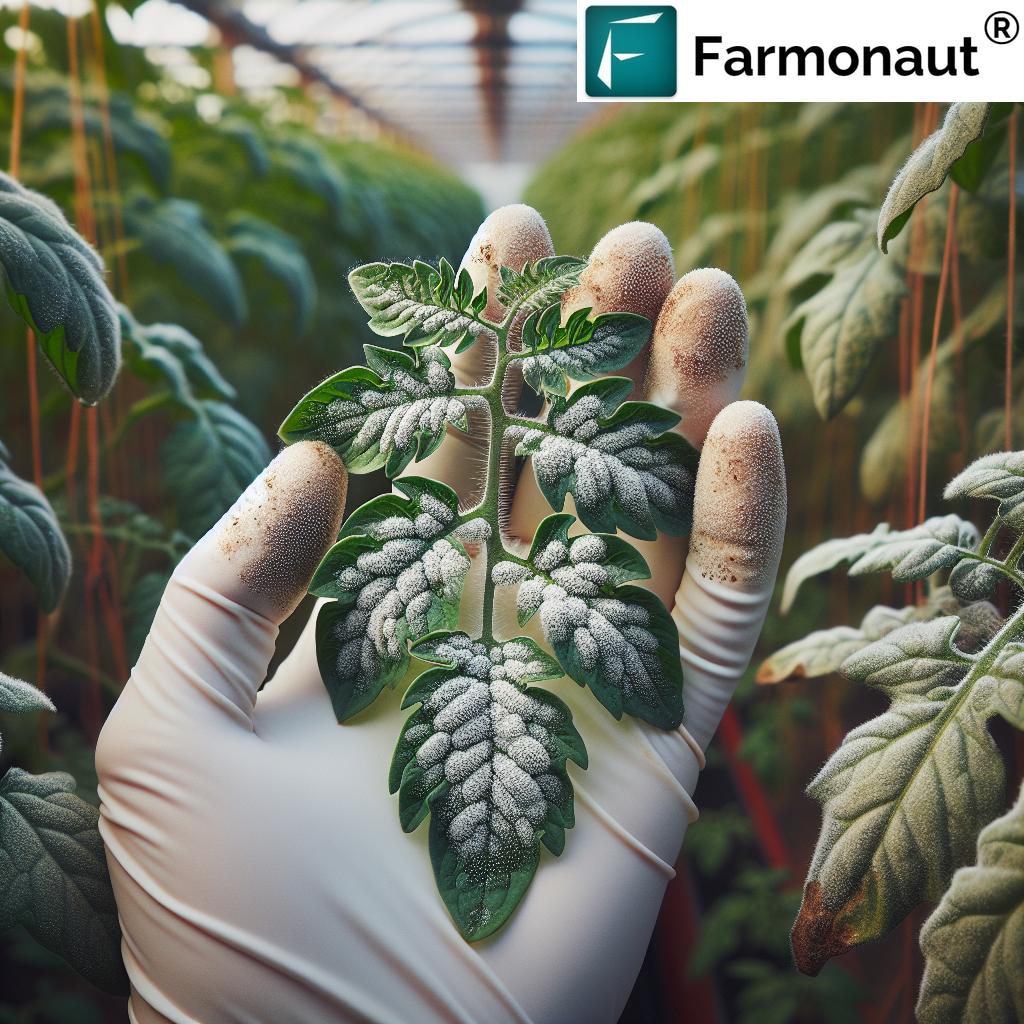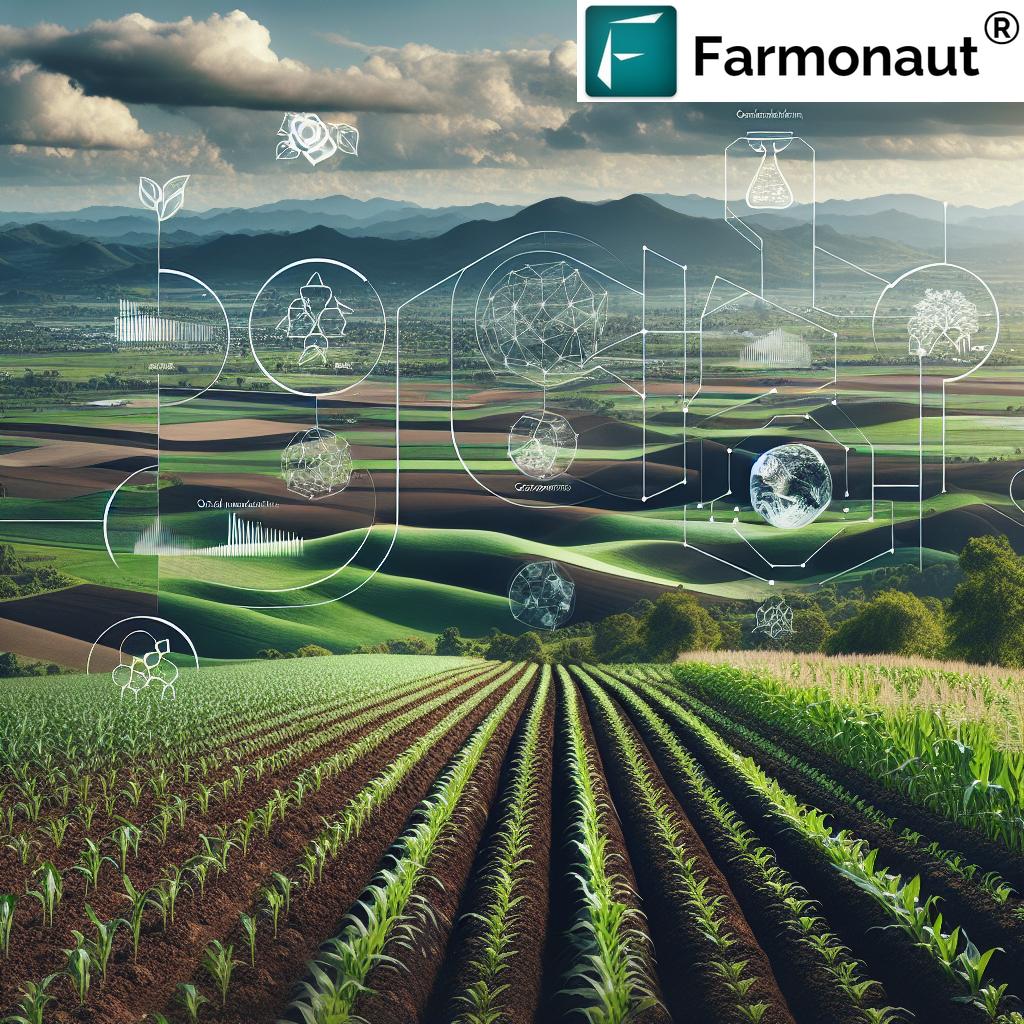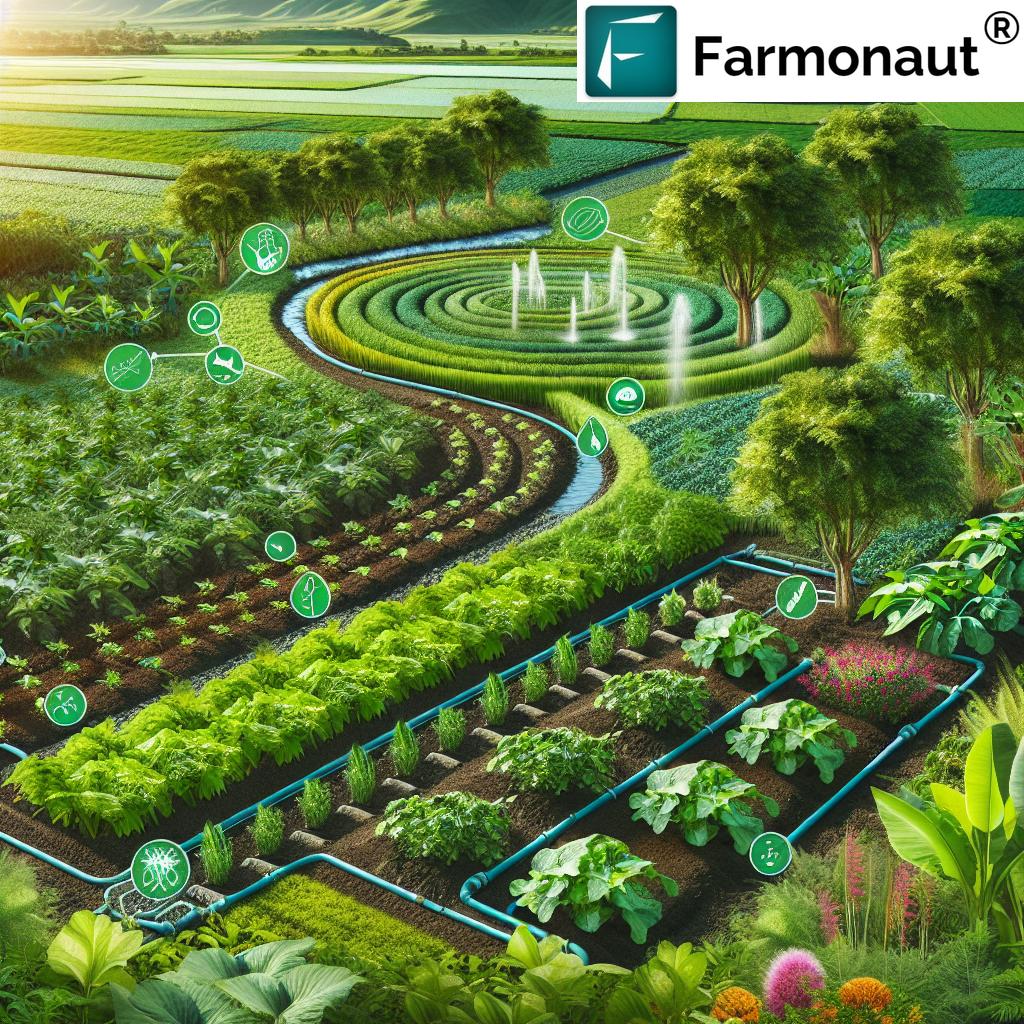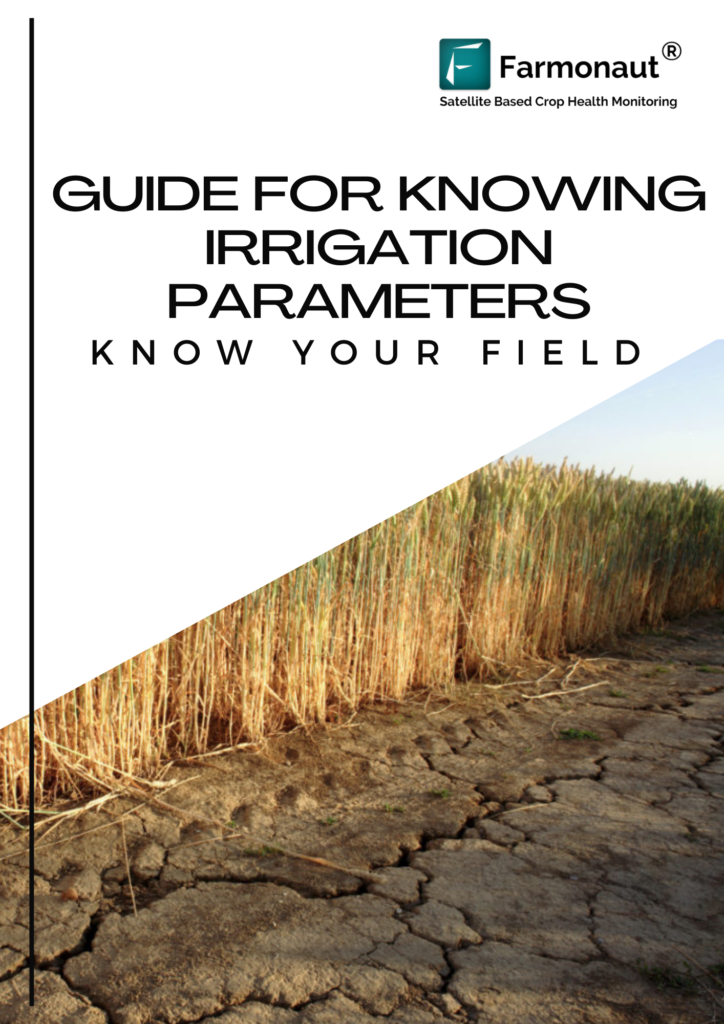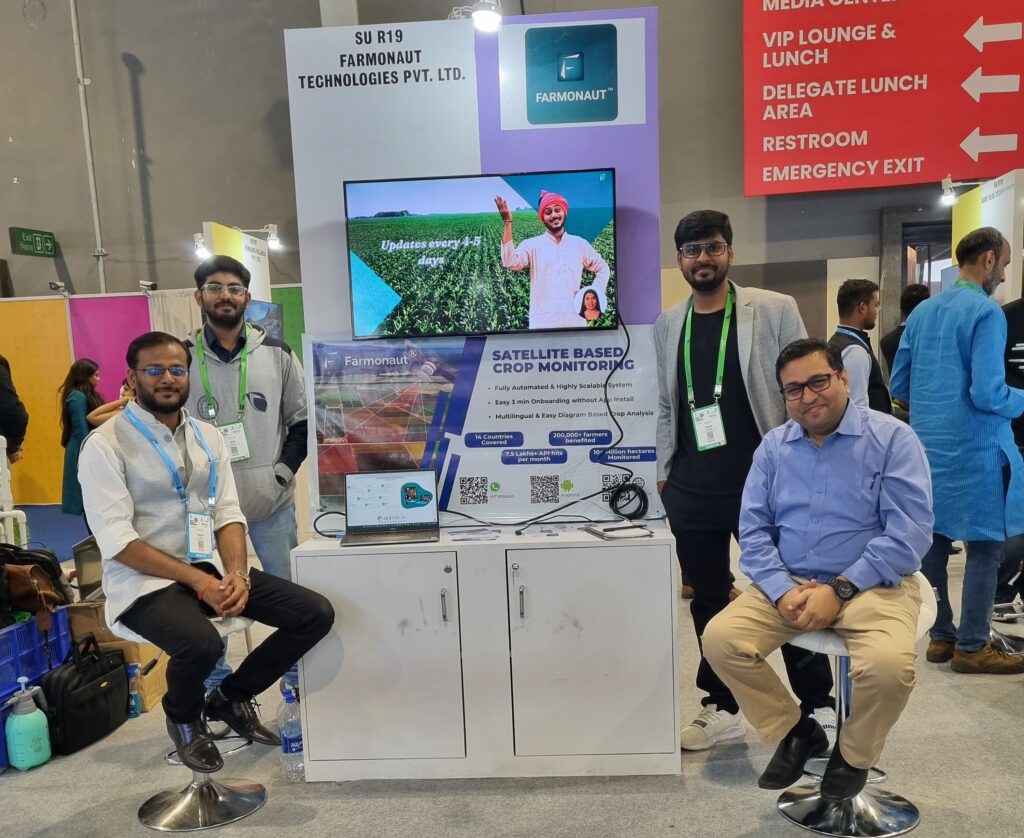Cotton Cultivation in India: From Plantation to Harvest – A Comprehensive Guide
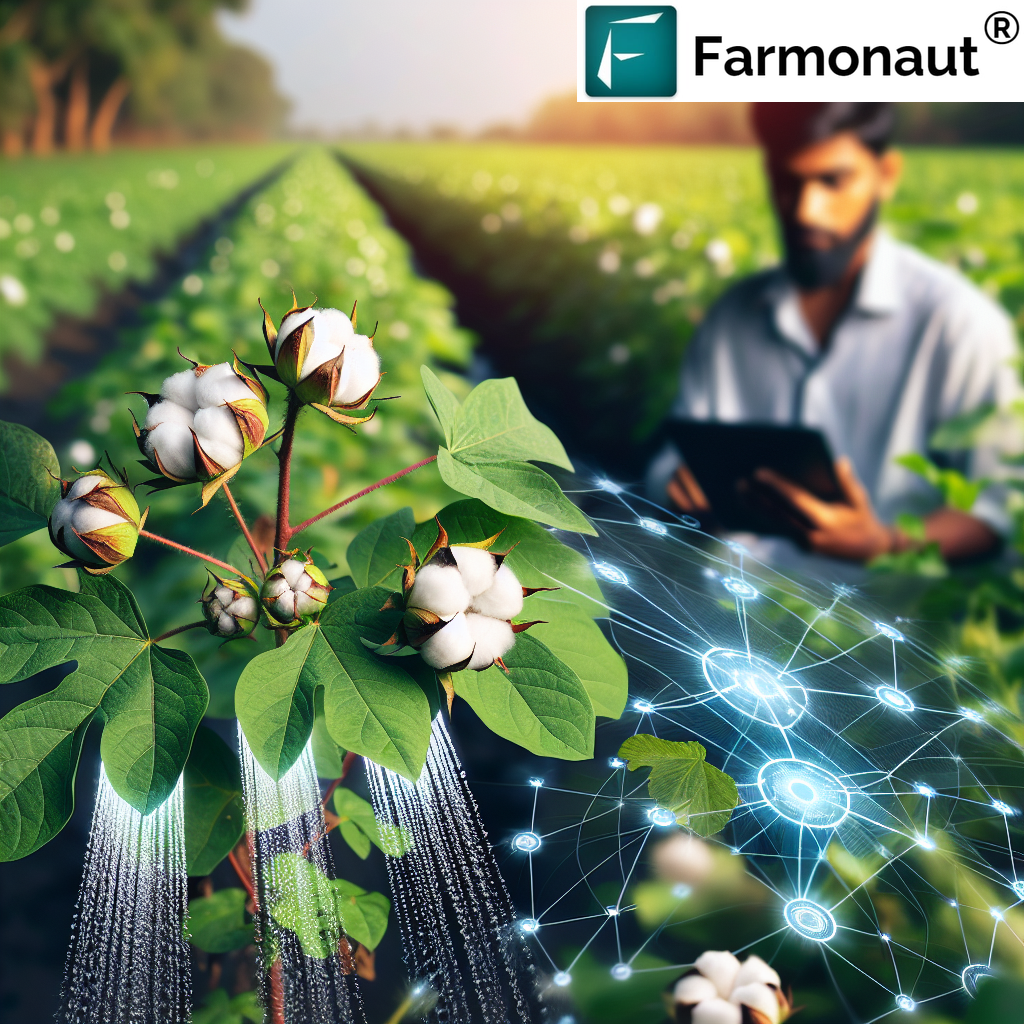
Welcome to our comprehensive guide on cotton cultivation in India. As pioneers in agricultural technology, we at Farmonaut are committed to providing valuable insights and innovative solutions to farmers across the country. In this extensive blog post, we’ll delve into the intricacies of cotton growing in India, exploring everything from planting techniques to harvesting methods, and the latest technological advancements revolutionizing the industry.
Table of Contents
- Introduction to Cotton Cultivation in India
- Historical Significance of Cotton in India
- Cotton Growing Regions in India
- Climate and Soil Requirements for Cotton
- Cotton Varieties Grown in India
- Cotton Planting Techniques
- Crop Management and Care
- Pest and Disease Management
- Irrigation Practices for Cotton
- Fertilization and Nutrient Management
- Cotton Harvesting in India
- Post-Harvest Processing and Storage
- Marketing and Export of Indian Cotton
- Challenges in Indian Cotton Cultivation
- Technological Advancements in Cotton Farming
- Sustainable Cotton Farming Practices
- The Role of Farmonaut in Modernizing Cotton Cultivation
- Future Prospects of Cotton Farming in India
- FAQs about Cotton Cultivation in India
- Conclusion
1. Introduction to Cotton Cultivation in India
Cotton, often referred to as “white gold,” has been an integral part of India’s agricultural and economic landscape for centuries. As one of the world’s largest producers and exporters of cotton, India’s relationship with this versatile crop runs deep. The cotton plant in India is not just a crop; it’s a symbol of the country’s agricultural prowess and a crucial contributor to its economy.
In this comprehensive guide, we’ll explore the various aspects of cotton growing in India, from the initial stages of plantation to the final harvest. We’ll delve into the traditional methods that have stood the test of time and the modern technologies that are shaping the future of cotton cultivation in the country.
2. Historical Significance of Cotton in India
The history of cotton in India dates back to ancient times. Archaeological evidence suggests that cotton cultivation in the Indian subcontinent began as early as 5000 BCE. The Indus Valley Civilization, one of the world’s oldest urban cultures, was known for its cotton textiles.
Throughout history, Indian cotton has played a significant role in global trade. During the colonial era, cotton became a major export commodity, leading to the establishment of numerous textile mills across the country. The famous Swadeshi movement, which promoted indigenous goods and boycotted foreign products, centered around cotton textiles, highlighting the crop’s cultural and political significance.
3. Cotton Growing Regions in India
When discussing where is cotton mainly grown in India, it’s important to note that the crop is cultivated across several states, each with its unique growing conditions and varieties. The major cotton-growing regions in India include:
- Gujarat: The largest cotton-producing state in India, known for its long-staple cotton varieties.
- Maharashtra: The second-largest producer, with a significant area under cotton cultivation.
- Telangana and Andhra Pradesh: These states are known for their high-quality cotton production.
- Punjab and Haryana: These northern states have a long history of cotton cultivation, benefiting from their well-developed irrigation systems.
- Madhya Pradesh: An emerging cotton-growing state with increasing production in recent years.
- Rajasthan: Known for its drought-resistant cotton varieties.
- Karnataka and Tamil Nadu: These southern states contribute significantly to India’s cotton production.
Each of these regions has its unique challenges and advantages, influencing the varieties grown and the cultivation practices employed.
4. Climate and Soil Requirements for Cotton
The success of cotton plantation in India heavily depends on suitable climate and soil conditions. Cotton is a warm-season crop that requires specific environmental factors for optimal growth:
- Temperature: Cotton thrives in temperatures between 21°C to 30°C. It requires at least 180 frost-free days for commercial cultivation.
- Rainfall: While cotton can be grown in both rainfed and irrigated conditions, it generally requires 500-1500 mm of rainfall annually.
- Sunlight: Cotton plants need abundant sunlight for photosynthesis and boll development.
- Soil: Well-drained, deep, and fertile soils are ideal for cotton cultivation. The crop prefers soils with a pH range of 6.0 to 7.5.
Understanding these requirements is crucial for successful cotton growing in India, as they influence everything from varietal selection to crop management practices.
5. Cotton Varieties Grown in India
India cultivates a wide range of cotton varieties, each adapted to specific agro-climatic conditions. The main types of cotton grown in India include:
- Gossypium hirsutum: Also known as American cotton, this is the most widely cultivated species in India, accounting for about 90% of production.
- Gossypium arboreum and Gossypium herbaceum: These are indigenous cotton species, often referred to as desi cotton. They are known for their drought resistance and are primarily grown in rainfed areas.
- Gossypium barbadense: This species produces extra-long staple cotton and is grown in limited areas due to its specific climatic requirements.
Within these species, numerous varieties and hybrids have been developed to suit different regions and resist various pests and diseases. The choice of variety significantly impacts the yield, quality, and overall success of cotton plants in India.
6. Cotton Planting Techniques
The process of cotton plantation in India involves several crucial steps:
- Land Preparation: The field is plowed and leveled to ensure proper drainage and aeration.
- Seed Selection: High-quality, certified seeds are chosen based on the region and desired traits.
- Sowing: Seeds are typically sown directly in the field, with spacing depending on the variety and local practices.
- Timing: Planting is usually done at the onset of the monsoon season, varying from April to July depending on the region.
- Seed Treatment: Seeds are often treated with fungicides and insecticides to protect against early-stage pests and diseases.
Modern planting techniques, including precision sowing and the use of seed drills, are increasingly being adopted to improve efficiency and yield.
7. Crop Management and Care
Proper management of cotton plants in India is crucial for achieving high yields and quality. Key aspects of crop management include:
- Weed Control: Regular weeding, either manual or through herbicides, is essential to prevent competition for nutrients.
- Thinning: Removing excess plants ensures proper spacing and resource allocation.
- Pruning: Topping and pruning are practiced to encourage branching and boll formation.
- Intercropping: Some farmers practice intercropping with pulses or other short-duration crops to maximize land use and income.
At Farmonaut, we provide satellite-based crop health monitoring services that help farmers track the growth and health of their cotton crops in real-time. Our Farmonaut app offers valuable insights into vegetation health, helping farmers make informed decisions about crop management.
8. Pest and Disease Management
Cotton is susceptible to a variety of pests and diseases, which can significantly impact yield and quality. Common pests in Indian cotton fields include:
- Bollworms (American, Pink, and Spotted)
- Whiteflies
- Aphids
- Thrips
- Mealybugs
Diseases that affect cotton plants include:
- Bacterial Blight
- Fusarium Wilt
- Verticillium Wilt
- Root Rot
Integrated Pest Management (IPM) practices are increasingly being adopted for sustainable pest control. These include:
- Use of pest-resistant varieties
- Biological control methods
- Crop rotation
- Judicious use of pesticides
Our Farmonaut platform includes an AI-powered advisory system that can help detect early signs of pest infestations or disease outbreaks, allowing farmers to take timely action.
9. Irrigation Practices for Cotton
While cotton is grown in both rainfed and irrigated conditions in India, proper irrigation management is crucial for optimal yields. The water requirements of cotton vary depending on the growth stage:
- Germination and Seedling Stage: Light, frequent irrigation
- Vegetative Growth: Moderate irrigation
- Flowering and Boll Formation: Increased water demand
- Boll Opening: Reduced irrigation to facilitate boll opening
Modern irrigation techniques like drip irrigation and sprinkler systems are being adopted to improve water use efficiency. At Farmonaut, our satellite-based soil moisture monitoring can help farmers optimize their irrigation schedules, ensuring efficient water use while maximizing crop health.
10. Fertilization and Nutrient Management
Proper nutrient management is essential for healthy cotton plants in India. The main nutrients required by cotton are:
- Nitrogen (N): Crucial for vegetative growth and yield
- Phosphorus (P): Important for root development and early growth
- Potassium (K): Enhances disease resistance and fiber quality
The application of fertilizers should be based on soil tests and crop requirements. Organic farming practices, including the use of compost and green manures, are gaining popularity for sustainable cotton production.
Our Farmonaut platform provides personalized fertilizer recommendations based on satellite data and soil analysis, helping farmers optimize their nutrient management strategies.
11. Cotton Harvesting in India
Cotton harvesting in India is a crucial phase that significantly impacts the quality and value of the final product. The harvesting process typically begins 150-180 days after planting, depending on the variety and growing conditions. Here’s an in-depth look at the cotton harvesting practices in India:
Manual Harvesting
Manual picking remains the predominant method of cotton harvesting in India. This traditional approach offers several advantages:
- Selective Picking: Pickers can choose only the fully opened bolls, ensuring higher quality.
- Reduced Contamination: Hand-picking minimizes the inclusion of leaves and other plant materials.
- Multiple Harvests: It allows for multiple pickings as bolls open at different times.
- Employment Generation: Manual harvesting provides seasonal employment to millions of rural workers.
The process of manual harvesting involves:
- Identifying mature, fully opened bolls
- Carefully removing the cotton from the boll without damaging the fibers
- Collecting the harvested cotton in bags or baskets
- Multiple rounds of picking over several weeks as more bolls open
Mechanical Harvesting
While less common, mechanical harvesting is gradually being adopted in some regions of India, especially in larger farms. Mechanical harvesters offer:
- Increased Efficiency: Can harvest large areas quickly
- Labor Savings: Reduces dependency on manual labor
- Single-Pass Harvesting: Collects all open bolls in one go
However, mechanical harvesting faces challenges in India due to:
- High Initial Investment: The cost of harvesters is prohibitive for many small and medium farmers.
- Field Conditions: Many Indian cotton fields are not suitable for large machinery due to small plot sizes or uneven terrain.
- Quality Concerns: Mechanical harvesting may lead to increased trash content in the harvested cotton.
Timing of Harvest
The timing of cotton harvesting in India is crucial and depends on several factors:
- Boll Maturity: Harvesting begins when 50-60% of the bolls are open.
- Weather Conditions: Dry weather is preferred to prevent moisture-related quality issues.
- Labor Availability: For manual harvesting, the timing often coincides with the availability of seasonal labor.
Post-Harvest Handling
Immediately after harvesting, proper handling is essential to maintain cotton quality:
- Drying: If necessary, the harvested cotton is spread out to dry under the sun.
- Cleaning: Preliminary cleaning to remove obvious contaminants.
- Storage: Temporary storage in clean, dry areas before transportation to ginning facilities.
Technological Advancements in Harvesting
At Farmonaut, we’re working on innovative solutions to improve the harvesting process:
- Satellite Imaging: Our satellite-based crop monitoring can help determine optimal harvesting times by analyzing boll maturity across fields.
- AI-Powered Yield Estimation: We’re developing AI models to estimate yields accurately, helping farmers plan their harvesting operations more efficiently.
- Mobile Apps: Our Android and iOS apps provide real-time weather forecasts, crucial for planning harvesting activities.
The harvesting stage is critical in determining the quality and marketability of cotton. By combining traditional knowledge with modern technology, we aim to help Indian cotton farmers optimize their harvesting practices for better yields and higher quality produce.
12. Post-Harvest Processing and Storage
After cotton harvesting in India, the crop undergoes several processing steps:
- Ginning: Separating cotton fibers from seeds
- Cleaning: Removing impurities and short fibers
- Baling: Compressing and packaging cotton for storage or transport
Proper storage is crucial to maintain cotton quality. Storage facilities should be dry, well-ventilated, and protected from pests. Our blockchain-based traceability solutions can help track cotton from the field through processing and storage, ensuring quality and transparency in the supply chain.
13. Marketing and Export of Indian Cotton
India is a major player in the global cotton market. The marketing process involves:
- Local Markets: Farmers sell to traders or directly to spinning mills
- Cooperative Societies: Some farmers market their cotton through cooperatives
- Government Procurement: Minimum Support Price (MSP) mechanism to ensure fair prices
- Export: A significant portion of Indian cotton is exported to countries like China, Bangladesh, and Vietnam
Our Farmonaut platform provides market intelligence and price forecasting tools to help farmers make informed decisions about when and where to sell their cotton.
14. Challenges in Indian Cotton Cultivation
Despite its importance, cotton growing in India faces several challenges:
- Climate Change: Unpredictable weather patterns affecting crop yield and quality
- Pest Resistance: Increasing resistance of pests to conventional pesticides
- Water Scarcity: Many cotton-growing regions face water shortages
- Market Volatility: Fluctuating prices impacting farmer incomes
- Soil Health: Intensive cultivation leading to soil degradation in some areas
At Farmonaut, we’re developing solutions to address these challenges, including climate-smart advisory services and soil health monitoring tools.
15. Technological Advancements in Cotton Farming
The cotton industry in India is witnessing rapid technological advancements:
- Precision Agriculture: Using GPS and satellite data for precise input application
- Genetic Modification: Development of Bt cotton varieties resistant to certain pests
- IoT Sensors: Monitoring soil moisture, temperature, and other parameters in real-time
- Drone Technology: For crop monitoring and targeted pesticide application
Our Farmonaut Satellite System offers significant advantages over drone and IoT-based monitoring:
| Feature | Farmonaut Satellite System | Drone-based Monitoring | IoT-based Monitoring |
|---|---|---|---|
| Coverage Area | Unlimited | Limited by flight time and regulations | Limited by sensor placement |
| Frequency of Data | Daily updates | Depends on flight frequency | Real-time but localized |
| Cost | Low per acre cost | High initial investment and operational costs | High initial investment for large areas |
| Ease of Use | User-friendly app interface | Requires trained operators | Requires technical setup and maintenance |
| Data Analysis | AI-powered insights | Often requires separate analysis tools | Limited to sensor capabilities |
16. Sustainable Cotton Farming Practices
Sustainability is becoming increasingly important in cotton growing in India. Some sustainable practices include:
- Organic Farming: Growing cotton without synthetic pesticides or fertilizers
- Water Conservation: Implementing efficient irrigation systems like drip irrigation
- Integrated Pest Management: Using natural predators and resistant varieties to control pests
- Crop Rotation: Alternating cotton with other crops to improve soil health
- Conservation Tillage: Minimizing soil disturbance to prevent erosion
Our Farmonaut platform supports sustainable farming by providing data-driven insights for efficient resource use and environmental impact monitoring.
17. The Role of Farmonaut in Modernizing Cotton Cultivation
At Farmonaut, we’re committed to revolutionizing cotton growing in India through our advanced technological solutions:
- Satellite-Based Crop Monitoring: Our platform provides daily updates on crop health, allowing farmers to detect and address issues early.
- AI-Powered Advisory: Our Jeevn AI system offers personalized recommendations for crop management, pest control, and resource optimization.
- Weather Forecasting: Accurate, localized weather predictions help farmers plan their activities effectively.
- Yield Prediction: Advanced algorithms estimate potential yields, aiding in harvest planning and marketing decisions.
- Blockchain Traceability: Our solutions ensure transparency and traceability in the cotton supply chain.
To explore how Farmonaut can benefit your cotton farming operations, visit our app page or check out our API documentation for integration with existing systems.
18. Future Prospects of Cotton Farming in India
The future of cotton growing in India looks promising, with several trends shaping the industry:
- Increased Adoption of Technology: More farmers are expected to embrace precision agriculture and data-driven farming.
- Focus on Sustainability: Growing demand for sustainably produced cotton will drive eco-friendly farming practices.
- Value-Added Products: Diversification into cotton by-products for additional income streams.
- Climate-Resilient Varieties: Development of cotton varieties adapted to changing climate conditions.
- Mechanization: Gradual increase in mechanized farming operations, especially in larger farms.
As technology providers, we at Farmonaut are continuously innovating to meet the evolving needs of cotton farmers and the industry at large.
19. FAQs about Cotton Cultivation in India
- Q: What is the best time for cotton plantation in India?
A: The optimal planting time varies by region but generally falls between April and July, coinciding with the onset of monsoon rains. - Q: How long does it take for cotton to grow in India?
A: Cotton typically takes 150-180 days from planting to harvest, depending on the variety and growing conditions. - Q: Which state is the largest producer of cotton in India?
A: Gujarat is currently the largest cotton-producing state in India. - Q: Is Bt cotton allowed in India?
A: Yes, Bt cotton is legally cultivated in India and accounts for a significant portion of cotton production. - Q: How can I improve my cotton yield?
A: Improving yield involves various factors including proper variety selection, timely planting, adequate irrigation, balanced fertilization, and effective pest management. Using technology like Farmonaut’s satellite monitoring can also help in making informed decisions.
20. Conclusion
Cotton cultivation in India is a complex and evolving field, rich in tradition yet increasingly driven by modern technology. From the initial stages of cotton plantation in India to the final cotton harvesting in India, each step requires careful planning and execution. As we’ve explored in this comprehensive guide, the success of cotton growing in India depends on a multitude of factors, from choosing the right variety for your region to implementing sustainable farming practices.
At Farmonaut, we’re proud to be at the forefront of technological innovation in agriculture. Our satellite-based monitoring systems, AI-powered advisory services, and blockchain traceability solutions are designed to help cotton farmers across India improve their yields, reduce costs, and farm more sustainably.
We invite you to join us in shaping the future of cotton farming in India. Whether you’re a small-scale farmer or managing large cotton plantations, our solutions are scalable to meet your needs. Visit our website or download our app to see how we can help you take your cotton farming to the next level.
Subscribe to Farmonaut services:
Together, we can ensure that Indian cotton continues to thrive, supporting millions of livelihoods and contributing to the global textile industry for generations to come.
